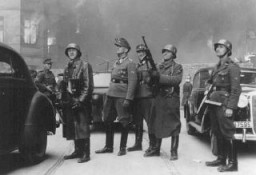You searched for: warsaw
<< Previous | Displaying results 161-170 of 487 for "warsaw" | Next >>
-
Mendel Rozenblit
ID CardMendel was one of six children born to a religious Jewish family. When Mendel was in his early 20s, he married and moved with his wife to her hometown of Wolomin, near Warsaw. One week after the Rozenblits' son, Avraham, was born, Mendel's wife died. Distraught after the death of his young wife and left to care for a baby, Mendel married his sister-in-law Perele. 1933-39: In Wolomin Mendel ran a lumber yard. In 1935 the Rozenblits had a daughter, Tovah. When Avraham and Tovah were school age, they began…

-
Sevek Fishman
ID CardSevek's religious Jewish family owned a haberdashery business in Kaluszyn, a suburb of Warsaw. The oldest of six children (three boys and three girls), Sevek completed high school and was then apprenticed to a tailor. 1933-39: Each Friday, before the Sabbath began, Sevek's mother asked the neighbors if they had enough food for the Sabbath. If they didn't, she brought them a meal. Although Sevek belonged to a non-religious Zionist group, Ha Shomer ha-Tsa'ir, and didn't wear a skullcap like religious Jews,…
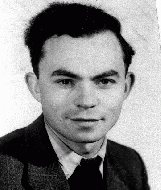
-
Itzik Rosenblat
ID CardItzik, also known as Izak, was one of three sons born to Yiddish-speaking Jewish parents. When Itzik was a young child his family moved to the city of Radom. Itzik left school when he was 11 to apprentice as a women's tailor. After he apprenticed with several tailors in Radom and Warsaw, he went back to school and earned a tailor's license. 1933-39: In 1938 Itzik married Taube Fishman, the daughter of his first employer, after a 13-year courtship much opposed by her family. They lived in Radom, where…

-
German policeman interrogates a Jewish man accused of smuggling
PhotoA German policeman interrogates a Jewish man accused of trying to smuggle a loaf of bread into the Warsaw ghetto. Warsaw, Poland, 1942-1943.
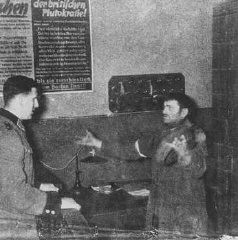
-
Three Jewish partisans
PhotoThree Jewish partisans in the Wyszkow Forest near Warsaw. Poland, between 1943–44.
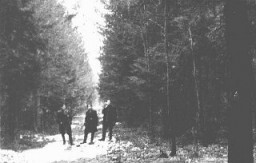
-
Metal box used to hide contents of the Oneg Shabbat archives
ArtifactOne of the ten metal boxes in which portions of the Ringelblum Oneg Shabbat archives were hidden and buried in the Warsaw ghetto. The boxes are currently in the possession of the Jewish Historical Institute in Warsaw.

-
Metal box that held contents of the Oneg Shabbat archive
ArtifactOne of the ten metal boxes in which portions of the Oneg Shabbat archive were hidden and buried in the Warsaw ghetto. The boxes are currently in the possession of the Jewish Historical Institute in Warsaw. This view is of an open box without the lid.
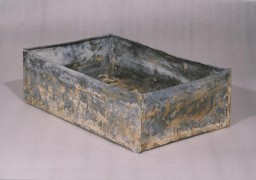
-
Close-up portrait of Miriam Wattenberg (Mary Berg)
PhotoClose-up portrait of Miriam Wattenberg (Mary Berg). Because Mary's mother was American, she and her family were sent from the Warsaw ghetto to Vittel in to be held for possible prisoner exchange. Her diary became the first wartime published eyewitness account in English of life in the Warsaw ghetto and the deportation of its inhabitants to be murdered at Treblinka.

-
An emaciated woman selling Star of David armbands
PhotoAn emaciated woman sells the compulsory Star of David armbands for Jews. In the background are concert posters; almost all are destroyed. Warsaw ghetto, Poland, September 19, 1941. This photograph was taken by Heinrich Joest, a German army sergeant during World War II. On September 19, 1941, he took 140 images of every aspect of life and death in the Warsaw ghetto.
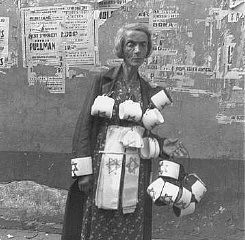
-
Juergen Stroop
PhotoJuergen Stroop (third from left), SS commander who crushed the Warsaw ghetto uprising. Warsaw, Poland, between April 19 and May 16, 1943.
